Animals That Eat Coral: A Quick Guide
Corals aren't just pretty ocean decorations—they're living colonial organisms made of tiny polyps that team up with algae called zooxanthellae for energy. These vibrant ecosystems face threats from both natural predators and human activities. Several marine animals feast on coral as their main food source.
These "corallivores" play important roles in reef ecosystems, but when their populations grow unchecked (often due to overfishing of their predators), they can damage reef health. Climate change and pollution make corals more vulnerable to these hungry hunters. Want to know which creatures munch on coral and how they impact reef ecosystems? Let's dive in!
Parrotfish (Subfamily Scarinae) - The Reef Sculptors
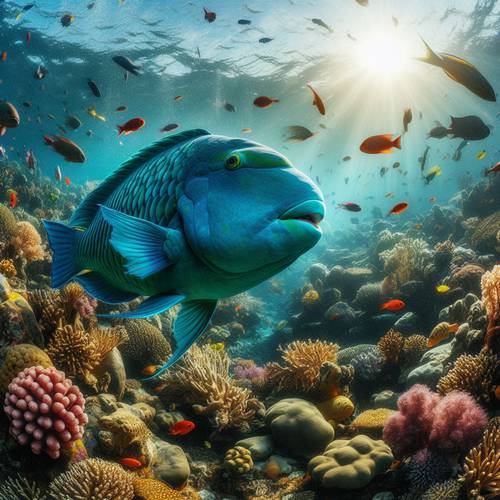
Enter the vibrant world of parrotfish, boasting an astounding diversity of around 95 species within the Scarinae subfamily. Renowned for their striking hues and fused teeth that form a parrot-like beak, these fish are prominent residents of coral reef ecosystems spanning the globe. Their powerful beaks, fortified with fluorapatite (one of nature's hardest biominerals), allow them to graze on algae and consume parts of the robust calcium carbonate structures of reef-building corals (hermatypic corals). Sizes vary greatly, from smaller species around 30 cm (1 ft) to the giant humphead parrotfish (Bolbometopon muricatum) which can reach 1.3 meters (4.3 ft) and weigh up to 46 kg (100 lbs).
While they primarily target the algae growing on and within coral skeletons, they inevitably ingest coral tissue and skeleton in the process. This grazing action, known as bioerosion, plays a crucial role in reef dynamics. A single large parrotfish can excrete several hundred kilograms (up to a ton for some species) of fine coral sand per year, contributing significantly to the beautiful white sand beaches of tropical islands. By controlling algal growth, they also prevent algae from overgrowing and smothering corals, thus helping to maintain reef health.
Triggerfish (Family Balistidae) - The Armored Crushers
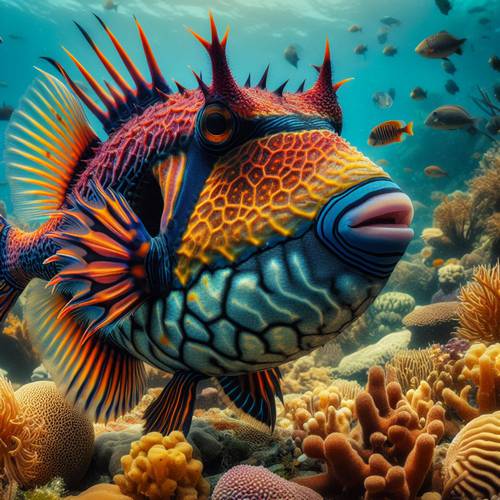
The incredible world of triggerfish encompasses around 40 species in the family Balistidae. These fascinating creatures are predominantly found in tropical and subtropical waters, thriving in coral reef ecosystems. Triggerfish are characterized by their robust bodies, powerful jaws, and a unique set of dorsal spines they can "trigger" or lock into place for defense or anchoring themselves in crevices. They typically range in size from 20 cm to 90 cm (8 inches to 3 feet).
Reef-dwelling triggerfish have a varied diet, preying on an array of small crustaceans, worms, brittlestars, sea urchins, mollusks, and other fish. Some larger species, like the titan triggerfish (Balistoides viridescens), which can grow up to 75 cm (2.5 ft), are known to consume algae and tiny invertebrates by nipping off sections of branching corals, notably those belonging to the Acropora and Seriatopora genera. Their strong teeth and jaws are well-adapted for crushing hard materials, making them effective coral predators when they choose to be.
Butterflyfish (Family Chaetodontidae) - The Delicate Nibblers
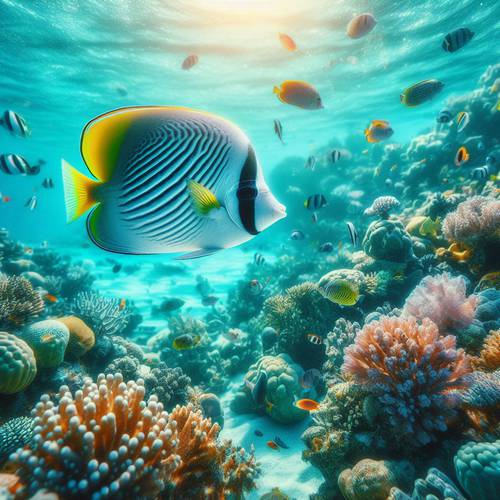
Discover the butterflyfish, a family (Chaetodontidae) where approximately 129 captivating species thrive amidst the stunning coral reefs of the Atlantic, Indian, and Pacific Oceans. These small, typically 12-22 cm (4.7-8.7 inches) long, brightly colored fish are often seen flitting in pairs around coral heads. Many species are "obligate corallivores," meaning their diet consists exclusively or primarily of live coral polyps. Others are "facultative corallivores," consuming coral opportunistically alongside algae and small invertebrates.
Species like the chevron butterflyfish (Chaetodon trifascialis) almost exclusively feed on Acropora corals, while the golden butterflyfish (Chaetodon aureofasciatus) also has a strong preference for live coral polyps. The foureye butterflyfish (Chaetodon capistratus) is known to feast on coral polyps and the protective mucus secreted by corals, which also traps microscopic food particles. Due to their dependence on live coral, the health and abundance of butterflyfish populations are often used as indicators of overall coral reef health.
Coral-Eating Nudibranchs (Order Nudibranchia) - The Specialized Slugs
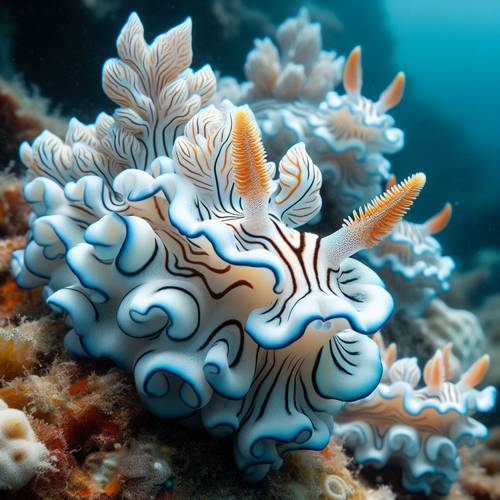
Nudibranchs, a diverse group comprising over 3,000 species of shell-less marine mollusks within the order Nudibranchia, thrive in various marine environments, including coral reefs of the Indian and Pacific Oceans. While many nudibranchs feed on sponges, hydroids, or bryozoans, a specific subset are specialized corallivores. These are typically small, often only a few millimeters to a few centimeters in length.
Among them, the genus Phestilla stands out as notable predators of live coral, particularly targeting the soft tissues of hard corals. Different Phestilla species display distinct prey preferences. For instance, Phestilla subodiosa demonstrates a preference for Montipora and Anacropora coral species, while Phestilla sibogae exclusively feeds on Porites corals. Similarly, Phestilla goniophaga predominantly preys on stony corals belonging to the Goniopora genus. Their specialized feeding can sometimes cause localized damage to coral colonies, especially in aquarium settings if their populations go unchecked.
Crown-of-Thorns Starfish (Acanthaster spp.) - The Voracious Predator
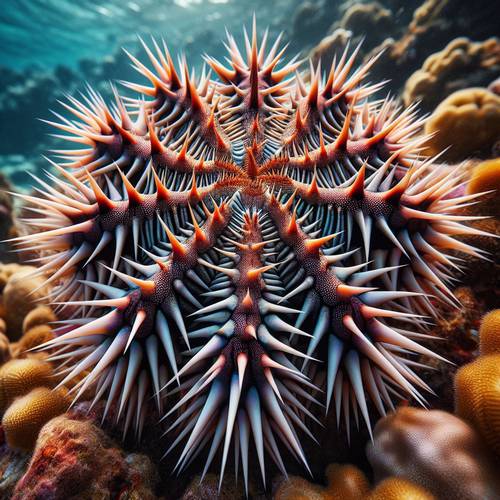
The Acanthaster genus, home to the infamous Crown-of-Thorns Starfish (COTS), represents one of the most significant coral predators. There are at least four distinct species. These large, multi-armed starfish, typically 25-35 cm (10-14 inches) but can reach up to 80 cm (31 inches) in diameter with 7 to 23 arms, are covered in venomous spines. They are found throughout the Indo-Pacific region.
COTS feed by extruding their stomach out through their mouth and over live coral, releasing digestive enzymes that liquefy the coral tissue, which is then absorbed. A single adult COTS can consume an astounding 5 to 6 square meters (around 60 square feet) of coral per year. They generally prefer fast-growing branching and plate corals like Acropora and Montipora. While naturally occurring, population explosions or "outbreaks" of COTS can lead to devastating losses, with reports indicating up to 90% decline in reef-building coral in affected areas. These outbreaks are often linked to nutrient runoff (which increases larval survival) and the over-harvesting of their natural predators, such as the giant triton snail.
Other Notable Coral Predators
Beyond the major groups discussed, several other marine animals include coral in their diet:
- Drupella Snails (Drupella spp.): These small muricid snails, often aggregating in large numbers, can cause significant localized damage to corals, particularly fast-growing branching species. They use their radula to scrape away coral tissue. Sizes are typically 1-4 cm.
- Filefish (Family Monacanthidae): While many filefish feed on algae and invertebrates, some species, like certain Cantherhines or Oxymonacanthus (longnose filefish), are known to nip at coral polyps. The longnose filefish, for example, almost exclusively eats Acropora polyps.
- Pufferfish (Family Tetraodontidae): Several pufferfish species possess powerful, beak-like jaws designed for crushing hard-shelled prey. Some larger puffers, like the Map Puffer (Arothron mappa), will occasionally bite off and consume chunks of coral, likely to get at the polyps or algae within.
- Coral-Reef-Dwelling Angelfish (Family Pomacanthidae): While many angelfish primarily graze on sponges and algae, some species, particularly juveniles or in certain reef conditions, may nip at coral polyps or mucus. Their impact is generally less significant than obligate corallivores.
- Some Sea Urchins (e.g., Diadema spp.): Primarily herbivores, sea urchins graze on algae. However, in high densities or when preferred algae are scarce, their grazing can lead to bioerosion of coral skeletons, and some species may directly consume coral tissue. Their impact is complex, as they also help control algae that competes with coral.
The Balanced Role of Coral Eaters
Coral predation isn't just destructive—it's a natural part of healthy reef systems. Some grazing actually helps reefs:
- Parrotfish control fast-growing corals, preventing them from dominating
- Their feeding creates settlement spaces for new coral larvae and produces sand
- Selective feeding by butterflyfish shapes coral community structure
When Balance Is Disrupted
The problem occurs when this balance breaks down, usually from human activities:
- Overfishing removes predators that control coral-eaters
- Pollution feeds Crown-of-Thorns starfish larvae
- Climate change weakens corals, making them easier targets
When these factors combine, coral predation overwhelms reefs' ability to recover, damaging biodiversity and reef structure.
Conclusion: A Delicate Balance in the Reef
Coral-eating creatures are remarkably diverse - from sand-producing parrotfish to the destructive Crown-of-Thorns Starfish. Each plays a unique role in reef dynamics.
While some coral predation maintains reef health, human activities can disrupt this balance. Effective conservation requires:
- Sustainable fisheries management
- Pollution reduction
- Climate action
- Targeted control of predator outbreaks
By understanding these complex relationships, we can better protect these vital underwater ecosystems for future generations.
